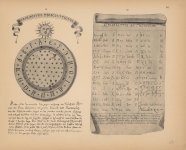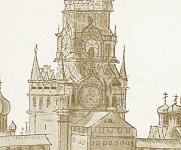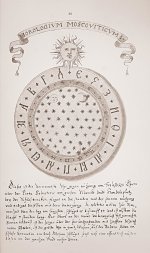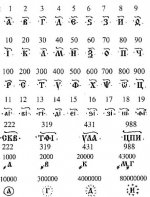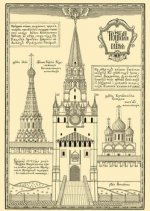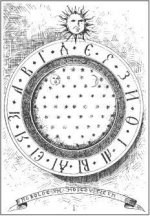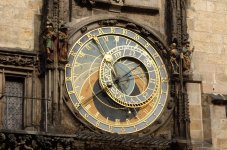Little by little, things reveal themselves, though without any specific explanation of what their meaning could be. Here we have a seventeen hour clock which apparently was installed on the Kremlin Spasskaya Tower as recently as 17th century. Obviously it is not being advertised anywhere; you can only run into it by accident. Some of the information is going to be google translated.


etching - museum reconstruction
In this case, the kudos goes to a certain German baron Augustin von Meyerberg. In 1661- 62, Meyerberg was in Russia as a member of an embassy from the Austrian emperor Leopold I. The purpose of the embassy was to act as mediator between Russia and Poland, which were fighting over the Ukraine. Meyerberg’s mission was unsuccessful. The result of his stay in Russia was the abundantly illustrated book Journey to Muscovy, which contains valuable, even if at times biased, information on the political history, government, and way of life in 17th-century Russia.
The Mayerberg Album is a collection of drawings and descriptions of the 17th-century Tsardom of Russia. Mayerberg travelled in Muscovy for almost a year, arriving on 25 May (15 May O.S.) and departing on 5 May 1662 (26 April O.S.). He wrote two Latin accounts of the embassy. Mayerberg also supervised the production of numerous drawings, collected in the so-called Mayerberg Album. The drawings primarily by one Johann Rudolf Storn, although Mayerberg also was accompanied by a painter called Puman. The album also includes often extensive annotations of the pictures in German. The original album was kept in the Royal Library in Dresden.
KD: Just like I said, I have no idea what this clock is, how it works, or why it has 17 hours on its dial. Simply ran into this info, and wanted to share it. If somebody understands the principles of this 17th century clock, please share.
One thing I do understand; it could not be the only clock out there. When a clock gets placed on a tower, it is there for everyone to see. This in turn means that people, to include travelers, understood how to read this clock, which means it had to be fairly common.
From here, the most natural question to ask - where are the other instances of this clock on other various etchings, paintings, etc? Did they get removed to conceal something specific?
Sources:
In 1628 the master Golovei built the second clock (in exchange for the burned) for the Spassky Tower. The Kremlin watch had a huge revolving dial weighing over 400 kg, divided into 17 parts. The dial was knocked down from the boards and painted with blue paint, light tin stars were fixed on its field. In the upper part of the dial were drawn the Moon and the Sun, the beam of which served as a fixed clock hand. The hourly divisions were denoted by the letters of the Slavic alphabet. The beating of the clock began when the first ray of the sun fell on the Spassky Tower, with the onset of darkness, the clock was translated to the night time. Twice a day, when the sun crossed the horizon, the watchmaker climbed the tower and manually turned the dial to the starting point.
etching - museum reconstruction
The Mayerberg Album is a collection of drawings and descriptions of the 17th-century Tsardom of Russia. Mayerberg travelled in Muscovy for almost a year, arriving on 25 May (15 May O.S.) and departing on 5 May 1662 (26 April O.S.). He wrote two Latin accounts of the embassy. Mayerberg also supervised the production of numerous drawings, collected in the so-called Mayerberg Album. The drawings primarily by one Johann Rudolf Storn, although Mayerberg also was accompanied by a painter called Puman. The album also includes often extensive annotations of the pictures in German. The original album was kept in the Royal Library in Dresden.
The Clock
I am not going to pretend that I understand any of it. Especially when visually we have two different clocks on the same tower.KD: Just like I said, I have no idea what this clock is, how it works, or why it has 17 hours on its dial. Simply ran into this info, and wanted to share it. If somebody understands the principles of this 17th century clock, please share.
One thing I do understand; it could not be the only clock out there. When a clock gets placed on a tower, it is there for everyone to see. This in turn means that people, to include travelers, understood how to read this clock, which means it had to be fairly common.
From here, the most natural question to ask - where are the other instances of this clock on other various etchings, paintings, etc? Did they get removed to conceal something specific?
Sources:


